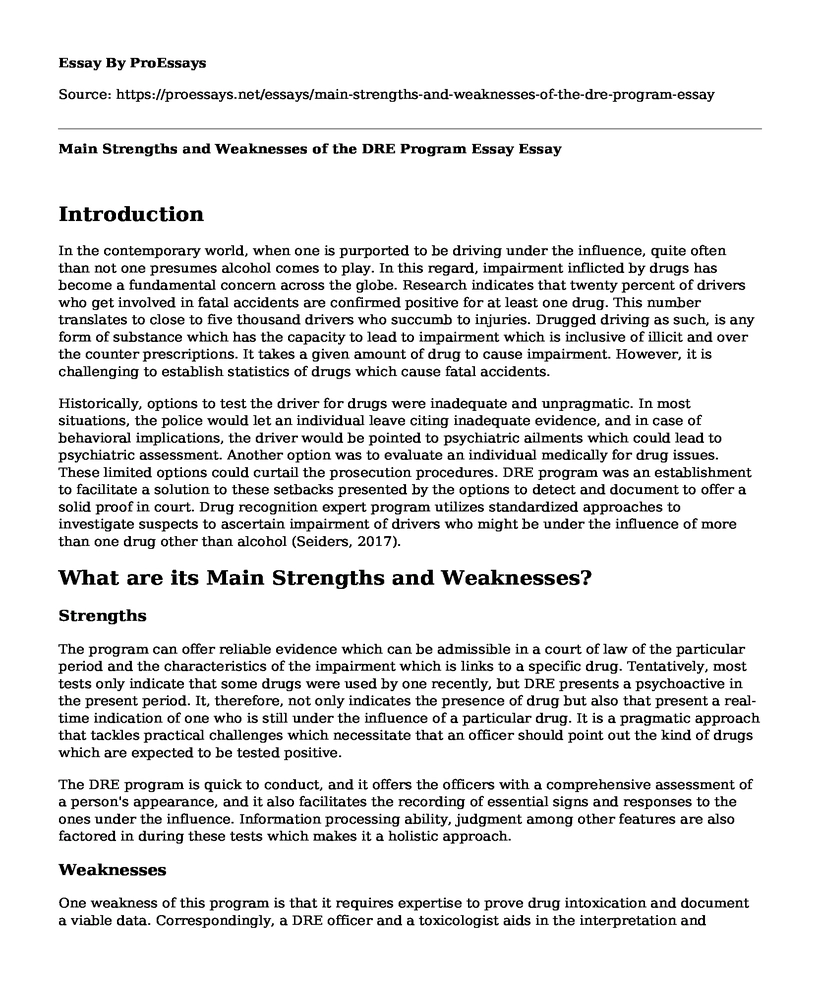Introduction
In the contemporary world, when one is purported to be driving under the influence, quite often than not one presumes alcohol comes to play. In this regard, impairment inflicted by drugs has become a fundamental concern across the globe. Research indicates that twenty percent of drivers who get involved in fatal accidents are confirmed positive for at least one drug. This number translates to close to five thousand drivers who succumb to injuries. Drugged driving as such, is any form of substance which has the capacity to lead to impairment which is inclusive of illicit and over the counter prescriptions. It takes a given amount of drug to cause impairment. However, it is challenging to establish statistics of drugs which cause fatal accidents.
Historically, options to test the driver for drugs were inadequate and unpragmatic. In most situations, the police would let an individual leave citing inadequate evidence, and in case of behavioral implications, the driver would be pointed to psychiatric ailments which could lead to psychiatric assessment. Another option was to evaluate an individual medically for drug issues. These limited options could curtail the prosecution procedures. DRE program was an establishment to facilitate a solution to these setbacks presented by the options to detect and document to offer a solid proof in court. Drug recognition expert program utilizes standardized approaches to investigate suspects to ascertain impairment of drivers who might be under the influence of more than one drug other than alcohol (Seiders, 2017).
What are its Main Strengths and Weaknesses?
Strengths
The program can offer reliable evidence which can be admissible in a court of law of the particular period and the characteristics of the impairment which is links to a specific drug. Tentatively, most tests only indicate that some drugs were used by one recently, but DRE presents a psychoactive in the present period. It, therefore, not only indicates the presence of drug but also that present a real-time indication of one who is still under the influence of a particular drug. It is a pragmatic approach that tackles practical challenges which necessitate that an officer should point out the kind of drugs which are expected to be tested positive.
The DRE program is quick to conduct, and it offers the officers with a comprehensive assessment of a person's appearance, and it also facilitates the recording of essential signs and responses to the ones under the influence. Information processing ability, judgment among other features are also factored in during these tests which makes it a holistic approach.
Weaknesses
One weakness of this program is that it requires expertise to prove drug intoxication and document a viable data. Correspondingly, a DRE officer and a toxicologist aids in the interpretation and determination of the specific drug which is ingested and its likeliness to cause impairment. Secondly, it is a program that only requires trained personnel to utilize based on the entirety of the results effectively. Moreover, the step two of the evaluation process can precisely be subjective rather than objective (Kane, 2013). Notably, this step can present a contextual prejudice which is the propensity to search for details in a way that can approve one's predeterminations. One major challenge is the presentation of DRE protocol in a court as sometimes judges retain discretion of excluding vital evidence given in some of the DRE reports due to their incapability to explain how they (DRE) derived their determination (Seiders, 2017).
References
Kane, G. (2013). The methodological quality of three foundational law enforcement drug influence evaluation validation studies. Journal of Negative Results in Biomedicine, 12(1). doi:10.1186/1477-5751-12-16
Seiders, G. T. (2017). Call in the experts: The drug recognition expert protocol and its role in effectively prosecuting drugged drivers. Widener Law Journal, 26(2), 229-275.
Cite this page
Main Strengths and Weaknesses of the DRE Program Essay. (2022, Jun 17). Retrieved from https://proessays.net/essays/main-strengths-and-weaknesses-of-the-dre-program-essay
If you are the original author of this essay and no longer wish to have it published on the ProEssays website, please click below to request its removal:
- Understanding of Children Regarding Gender-related Responsibilities of Parents
- Homeless Bill in Hawaii Essay
- Definition Essay on Racial Profiling
- Why Democracies Do Not Fight Each Other Paper Example
- Essay Sample on Women Incarceration in America: A Long and Brutal History
- Essay Sample on Gender Disparity in Music Industry: Who Makes the Canon?
- Essay Sample on Democracy: A System of Governance for a Fair, Just World







